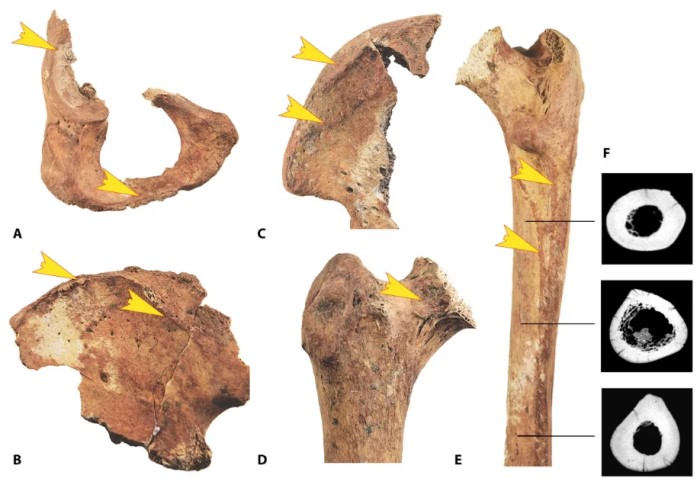From dinosaurs to humans, the bones that are left behind after death can leave clues to the lives that were lived.
We often see it in museums, where paleontologists recreate an epic battle between two dinos based on markings left behind on the bones. But not all of the stories that are told are about fights. Many are simply about the everyday activities that animals engage in.
In humans, for example, athletes and workers who engage in physical labour will leave telltale signs of the muscles that they used most thanks to marks left on the bones. That is because muscles are attached to bones. If we use certain ones a lot, the markings on bones where those muscles are attached will be more visible than on the average person.
Enter a new study of a 5,000 year-old gravesite in Romania. Anthropologists believe that they have discovered the earliest physical evidence of horseback riding in humans. The proof? It's not the discovery of a bridle or a saddle.
It's wear and tear on the leg and butt bones of the people!
Work those legs!

Examples of the bones that were discovered. They show the hip (A), pelvic (B, C), and thigh bones (D,E, F) of some of the proposed ancient horseback riders. (Getty Embed)
The site these experts investigated is believed to belong to the remains of members of a group of people known as the Yamnayans. The Yamnayan Peoples lived across parts of what is now known as eastern Europe and central Asia. They were believed to be semi-nomadic (wandering) hunter-gatherers, meaning that they were regularly on the move in search of food and shelter.
That's something that riding horses would help with!
In an interview with CBC's Quirks and Quarks, an anthropologist from Harvard University and Hartwick College, David Anthony, laid out the case.
"What you're talking about is an activity in which you're squeezing your thighs and your knees together while you're keeping your legs far apart and bouncing up and down on your tailbone. There are very few activities that require all of that other than horseback riding."
And these signs weren't found in just one skeleton. Several skeletons at the site—which dates back to around 3000 BC—showed the same kinds of markings in the same places. The researchers feel that this is too much to be a coincidence. Instead, it is likely proof that Yamnayans were some of the first people to begin successfully domesticating horses.
A huge advantage
Being able to ride horses would have been a big deal at that time. And it showed in the range of the Yamnayan people.
Remains of this culture have been found across an enormous distance, spanning thousands of kilometres. Today, many thousands of people make that journey in a few hours by car, plane, or train. But in 3000 BC, when most travel was still by foot, the journey would have taken months.
"That's a range of 5,000 kilometers," Anthony told CBC, "the equivalent of ... the entire width of North America. That's how far these people migrated, and that was unprecedented at the time."
Traveling by horseback would've reduced that time that migration took. On a horse, a trip that would take a week could be done in a day. And you could carry more goods with you as you as you traveled.
Giddy up!
 How long have humans been riding horses? This new study thinks we're getting closer to finding out. (ID 20705913 © Starletdarlene | Dreamstime.com)
How long have humans been riding horses? This new study thinks we're getting closer to finding out. (ID 20705913 © Starletdarlene | Dreamstime.com)








